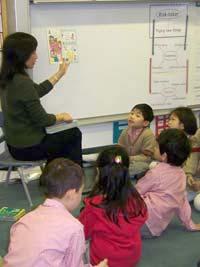Chinese students languish when it comes to creativity

By Arun Anand
Yuang, the mother of an eight-year-old who studies in a public school in the Chinese capital, says, “My daughter hardly gets time to play. She goes for school at six in the morning and comes back by evening. After that she has to finish loads of homework.”
Parents in China have been expressing concern over the last few years about the growing burden of studies and the pressure of examinations, especially on school students - at the cost of creative activities.
A recent global survey which ranks Chinese students at the bottom when it comes to applying “creativity” and “imagination” is all set to refuel the debate on the Chinese school education system.
For instance, on weekends, Yuang’s daughter learns piano and takes private coaching for mathematics and English. “If she gets time after that, which is rare, then she may play for a couple of hours,” said Yuang.
The scenario is repeated for student after student in state-funded public schools, with children right from the elementary level being pushed by parents and institutions to prepare them for a fiercely competitive global scenario.
“If she doesn’t study hard and stops taking extra classes, how would she do well in high school? And she may not easily get admission in a good Chinese university. How will she face the growing competition?” Yuang says explaining why her daughter takes private coaching classes even during weekends.
The survey covering 21 countries was conducted by the International Educational Progress Evaluation Organization. It said Chinese students excelled in subjects like mathematics. But when it came to “creativity”, they were fifth from the bottom. They were tied for the last place when it came to using their imagination.
The international survey comes in the wake of a cross-Canada outcry over a Maclean’s magazine for its recent article about the changing face of Canada’s universities titled “Too Asian?”
The article said that to some students, an “Asian” school has come to mean one that is so academically focused that some students feel they can no longer compete or have fun.
This prompted Victoria municipal Coun. Charlayne Thornton-Joe, herself Chinese-Canadian to forward a resolution condemning Maclean’s saying the headline “can only be described as offensive and intolerant.”
The article itself “propagates a litany of racial stereotypes and suggests that students of Asian heritage may be limiting opportunities for non-Asians at certain Canadian universities,” the resolution read.
The Chinese Canadian National Council, has called the Maclean’s article offensive, while students at several universities including University of Victoria and UBC have planed protests.
Another group of Asian-Canadian institutions said the Maclean’s and the Toronto Star recycled historical and ongoing depictions of Asians as “yellow and brown perils” that threaten the Canadian social order. “In 1979 the CTV television news series W5 portrayed Canadian citizens and permanent residents of Asian descent as “foreigners,” allegedly taking over Canadian educational institutions. We see Maclean’s and the Toronto Star as reinforcing a long and deeply ingrained history of anti-Asian racial anxiety that has led to bigoted profiling and discrimination of Asian Canadians.”
Indicating the sense of urgency that seems to have gripped Chinese society in tackling this issue which figures quite prominently in private conversations among parents of school students, state-run English newspaper China Daily recently expressed serious concern in an editorial over the anomalies in the Chinese school education system.
Commenting on the findings of the global survey, the daily said, “That our students rarely get the chance to use their imagination was an open secret among Chinese people. Now, a global survey has brought it to the notice of the rest of the world”.
“The survey results are not shocking, given the way our children are taught in schools and at home…Right from the day they enter school they are pushed into a culture of exams and more exams…And to pass those exams, they are made to learn by rote standard answers,” it further commented.









